Abstract
In two experiments, rats were trained to deposit ball bearings down a hole in the floor, using an algorithmic version of shaping. The experimenter coded responses expected to be precursors of the target response, ball bearing deposit; a computer program reinforced these responses, or not, according to an algorithm that mimicked the processes thought to occur in conventional shaping. In the first experiment, 8 of 10 rats were successfully shaped; in the second, 5 of 5 were successfully shaped, and the median number of sessions required was the same as for a control group trained using conventional shaping. In both experiments, “misbehavior,” that is, excessive handling and chewing of the ball bearings, was observed, and when the algorithmic shaping procedure was used, misbehavior could be shown to occur in spite of reduced reinforcement for the responses involved.
Keywords: shaping, misbehavior, token reinforcement, fixed ratio, operant-respondent interactions, ball bearing deposit, rat
Full text
PDF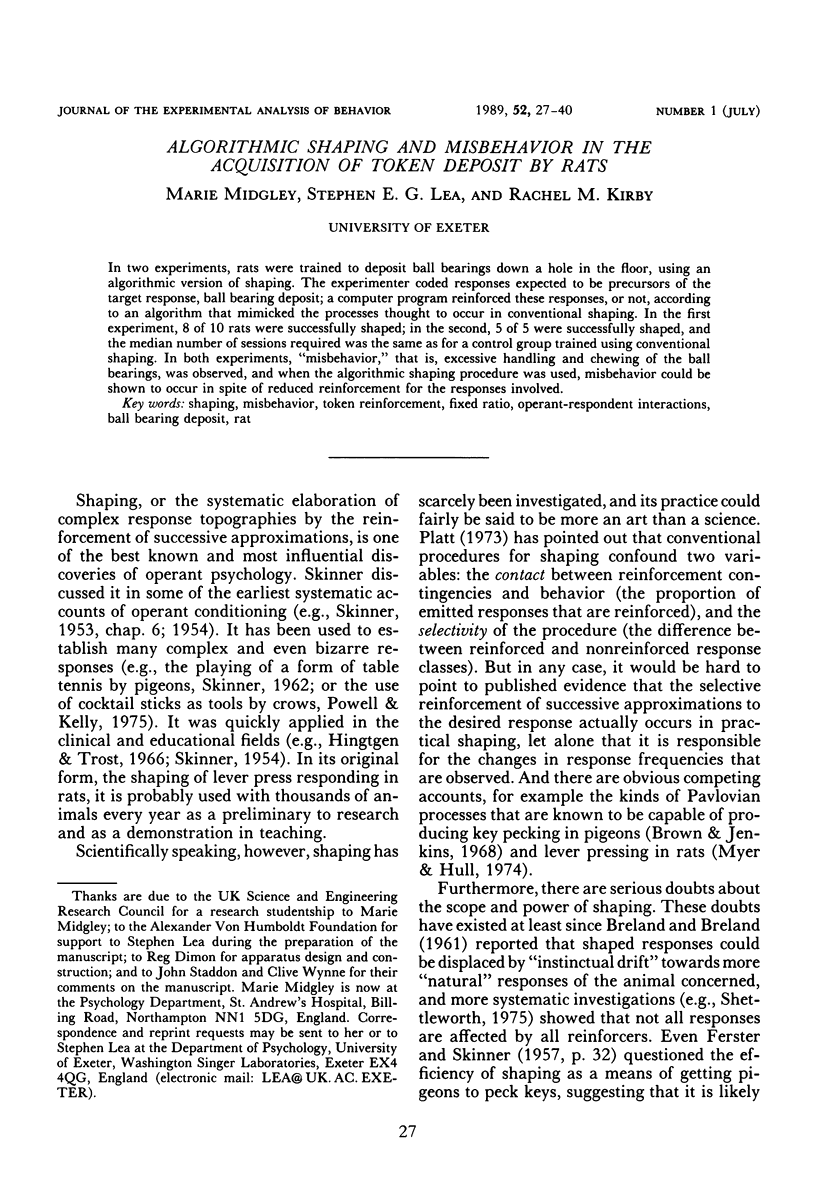
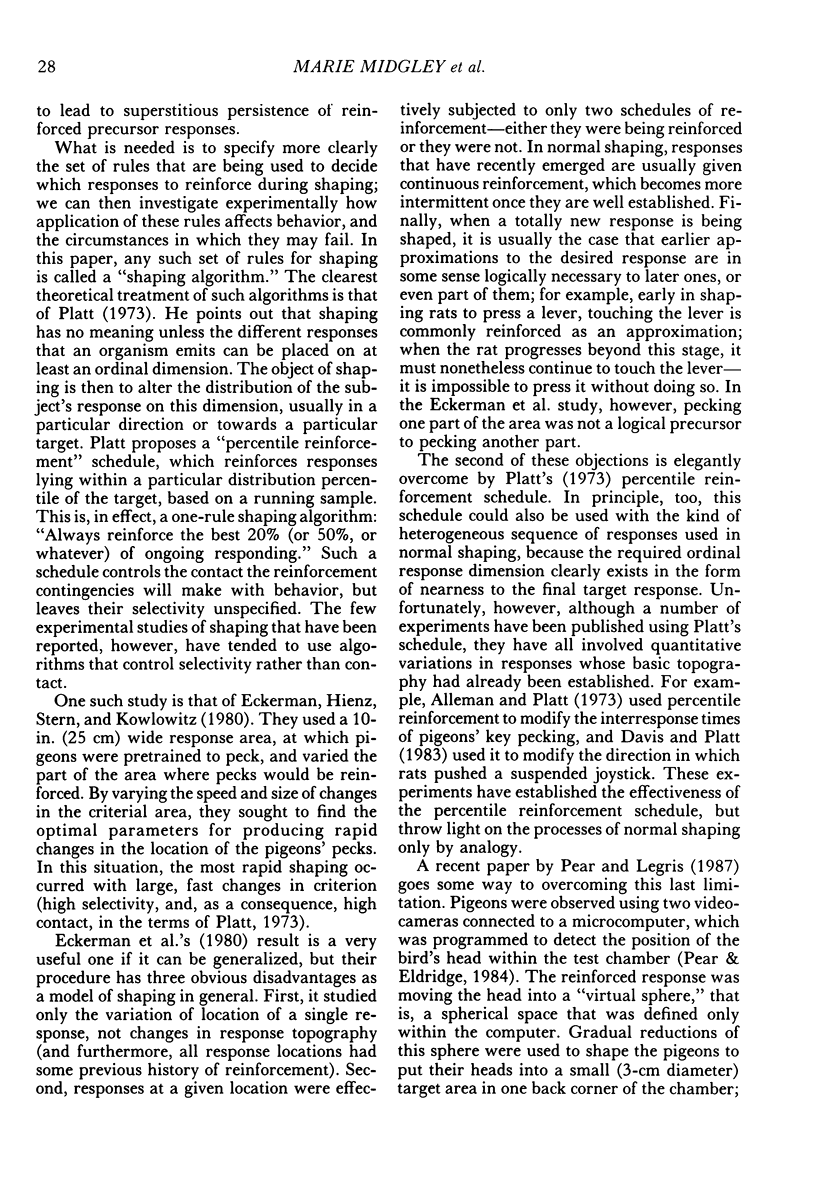
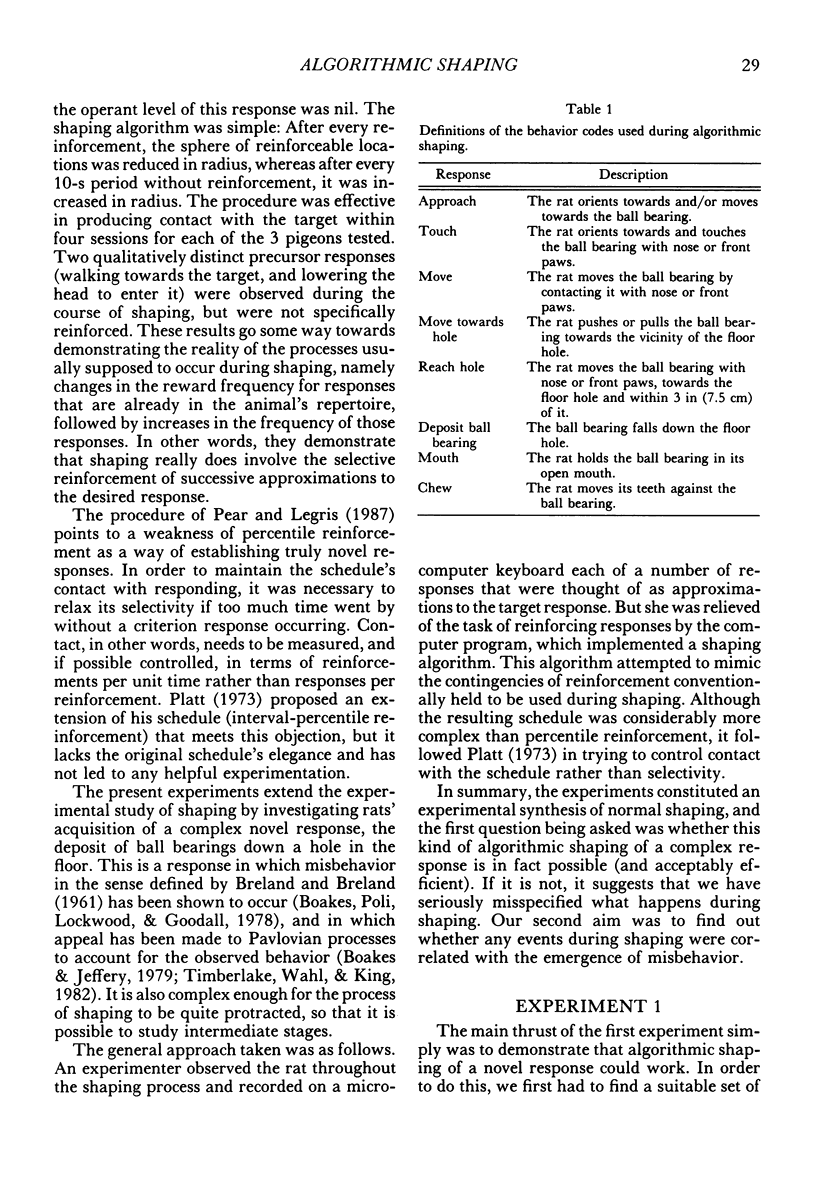
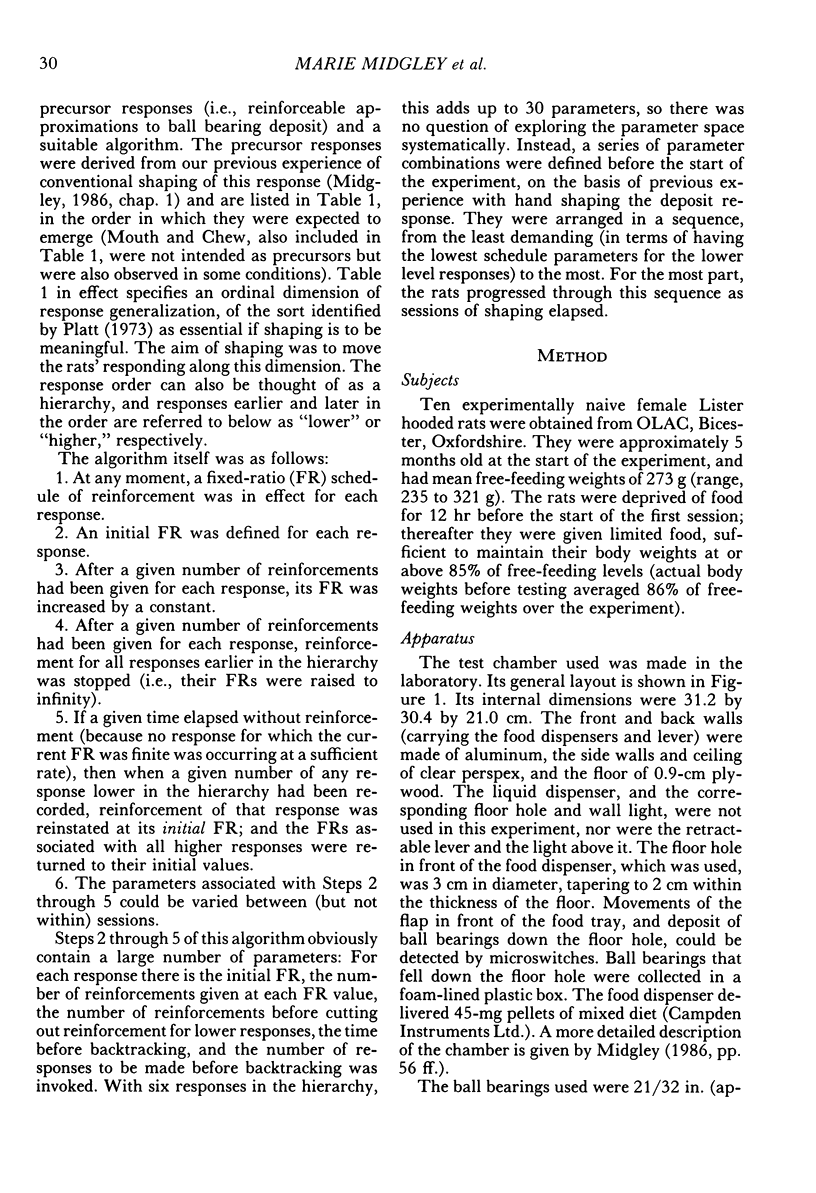
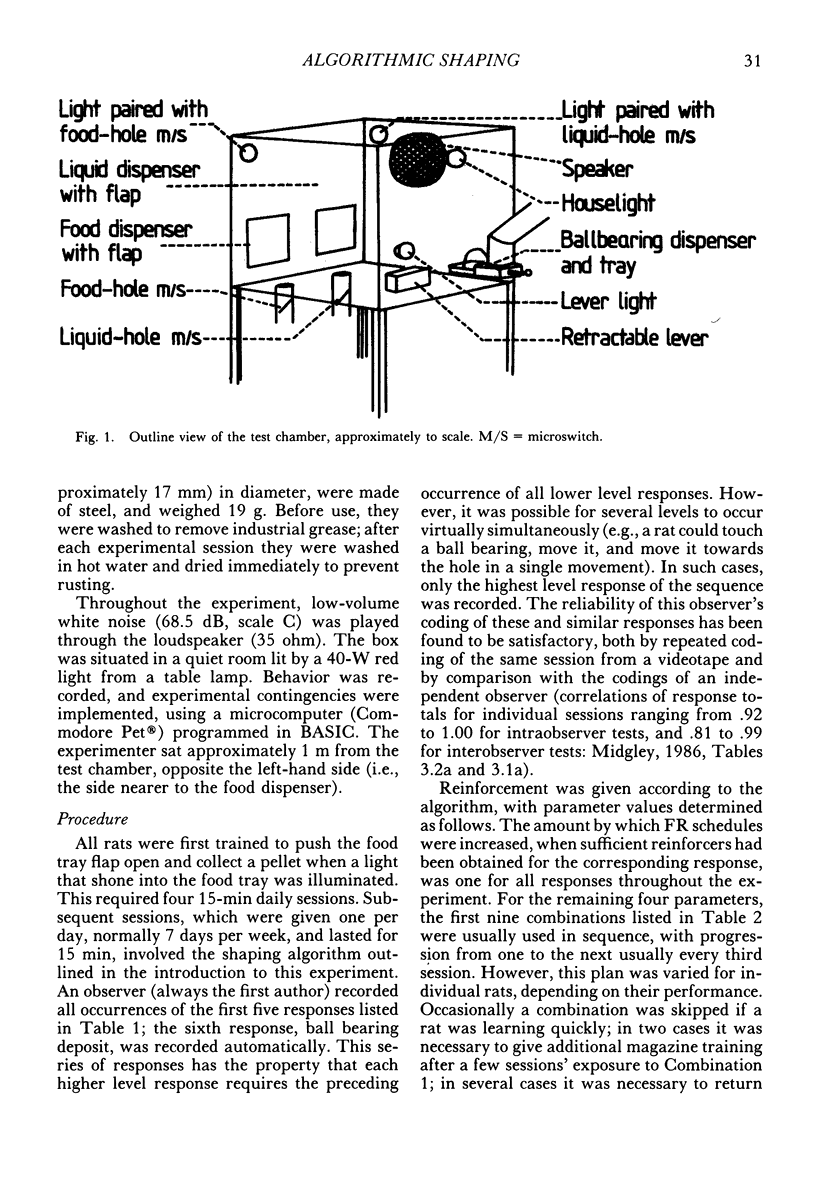
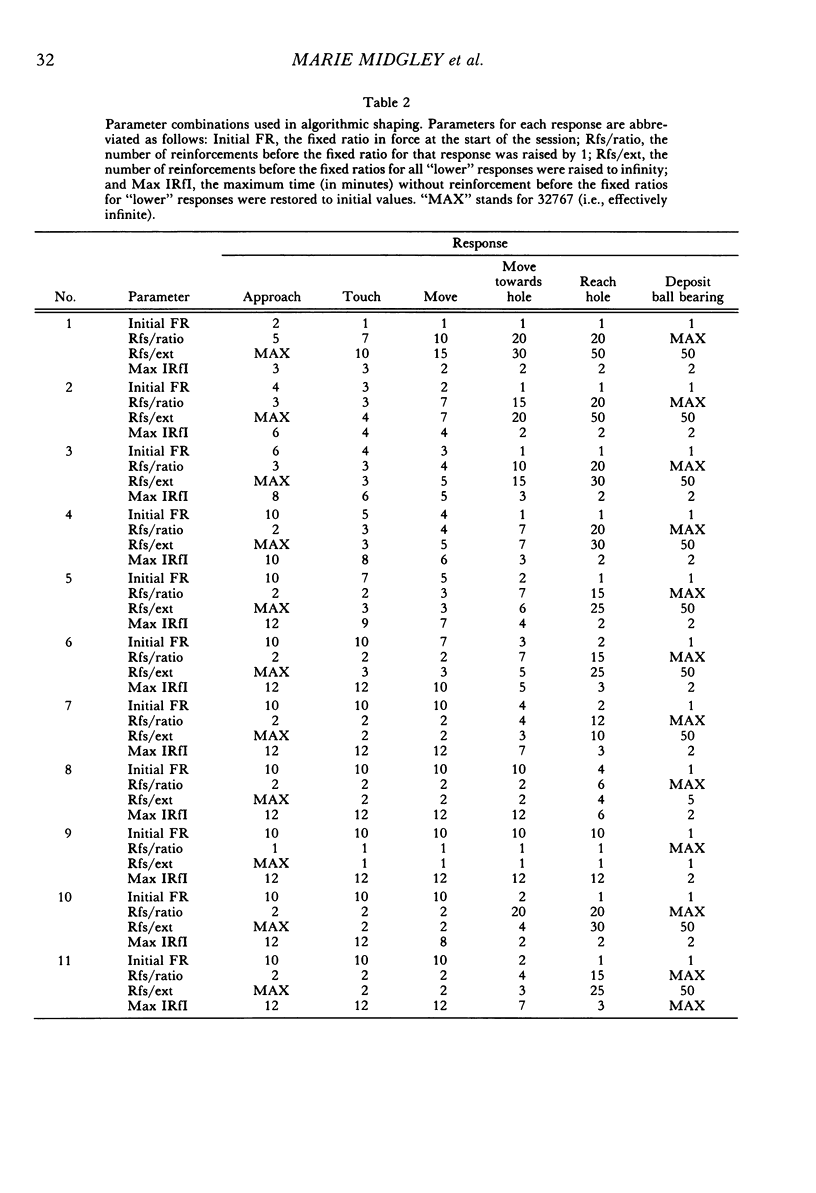
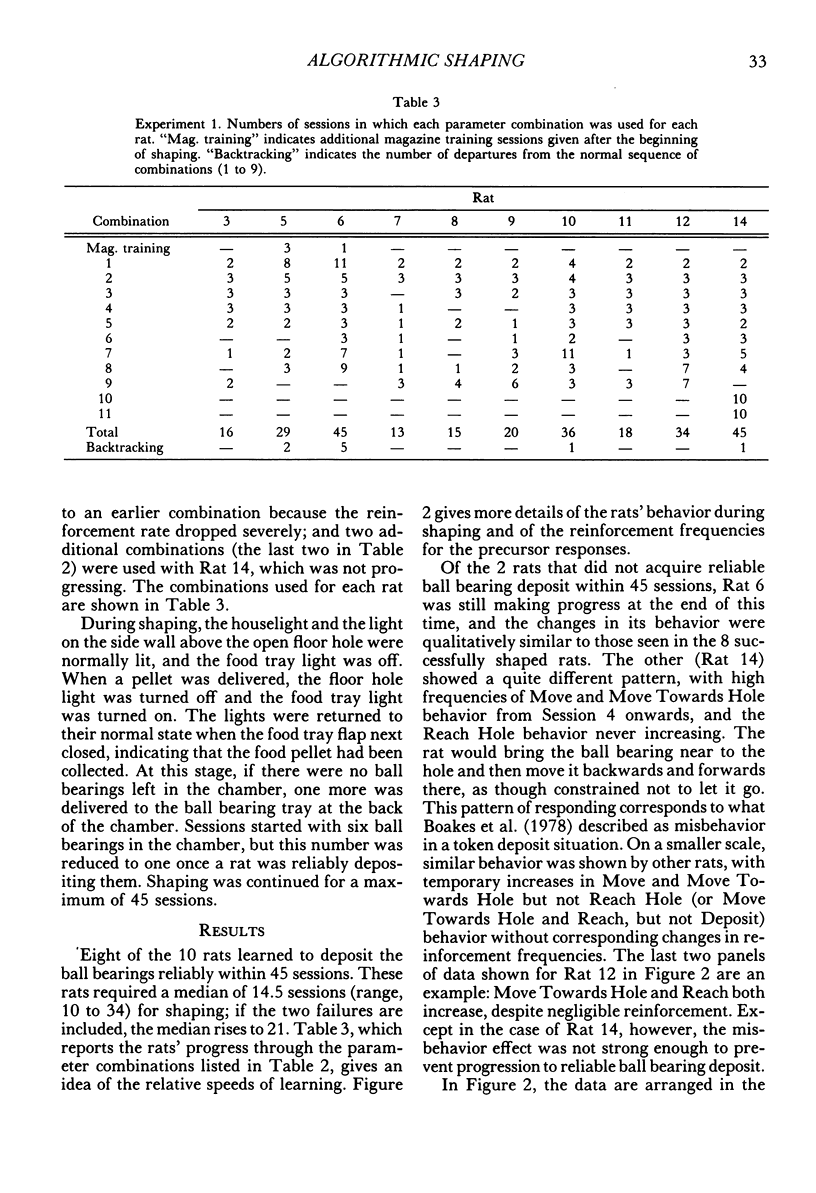
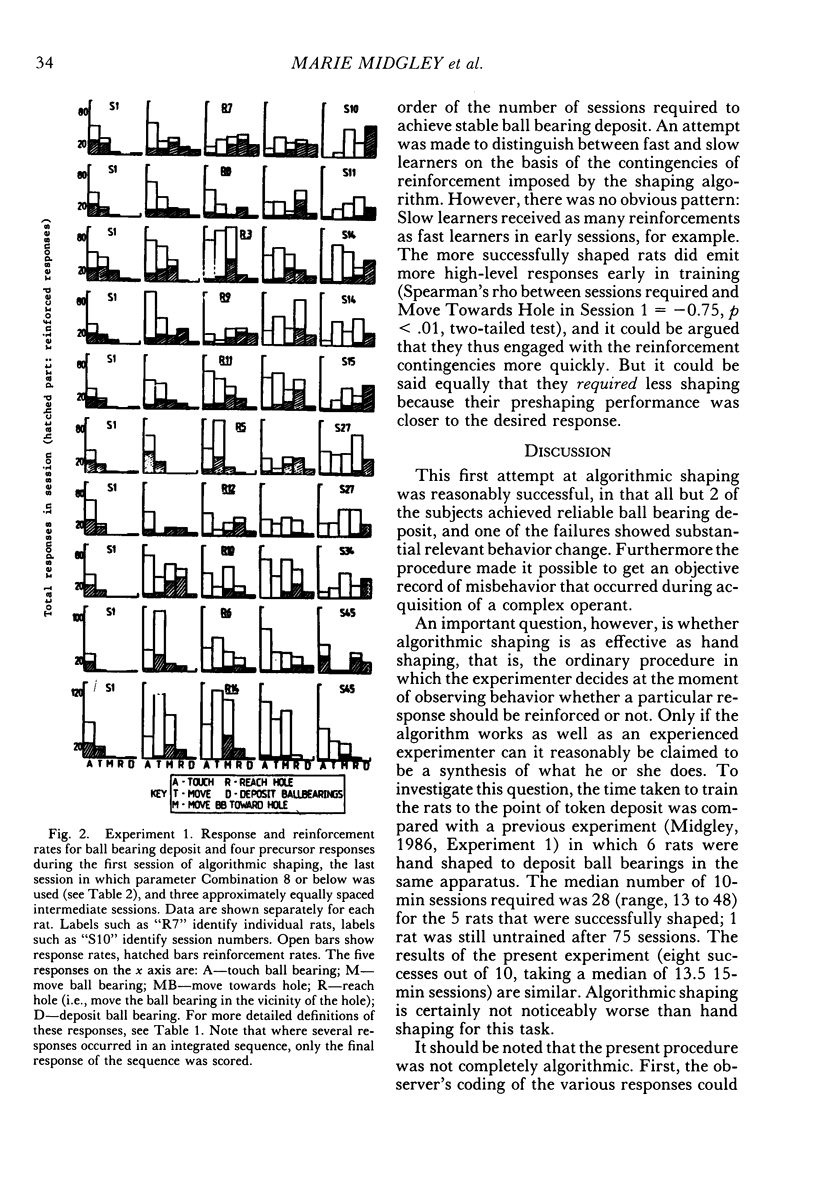
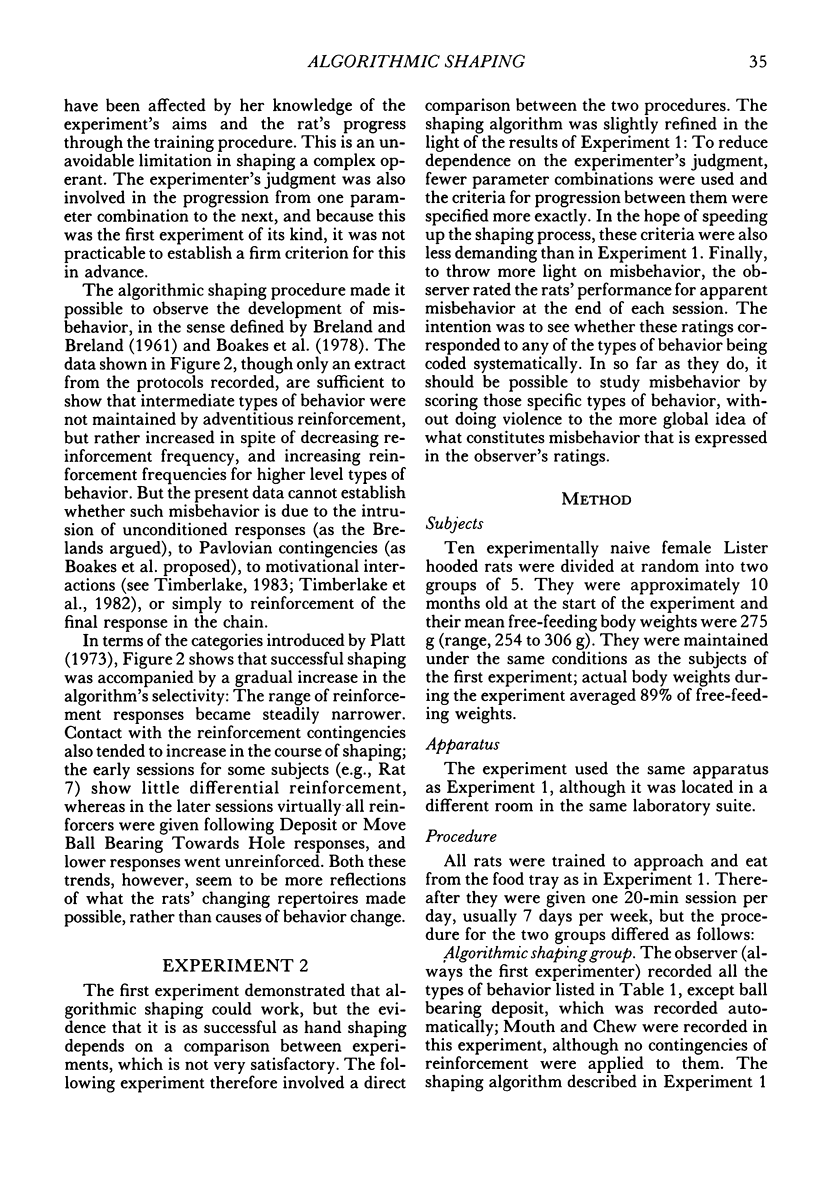
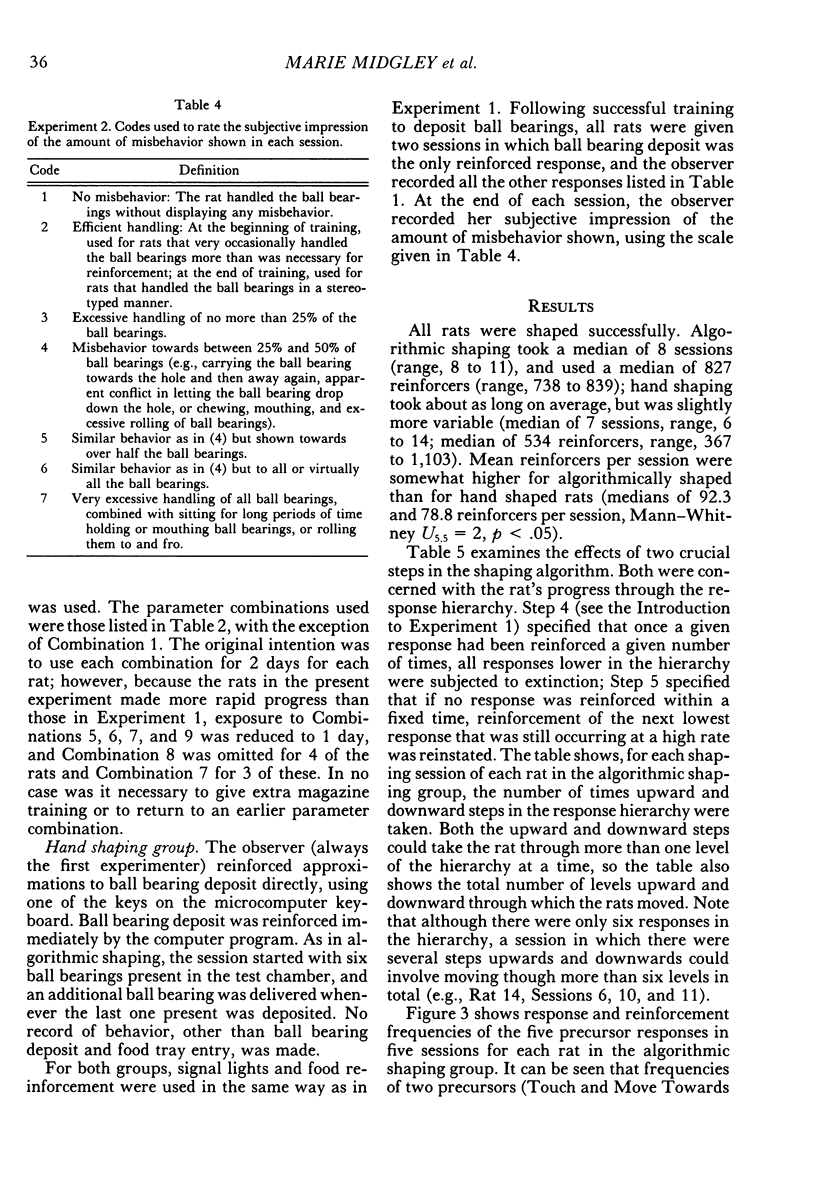
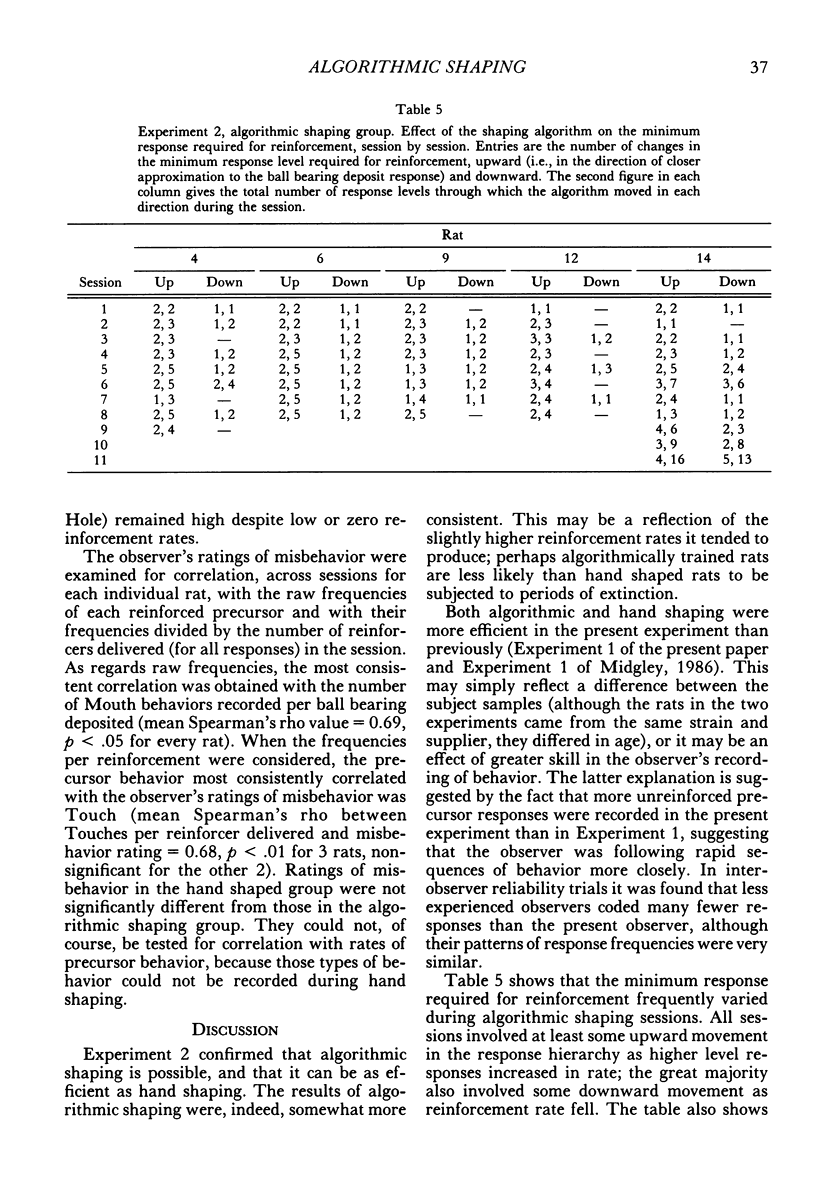
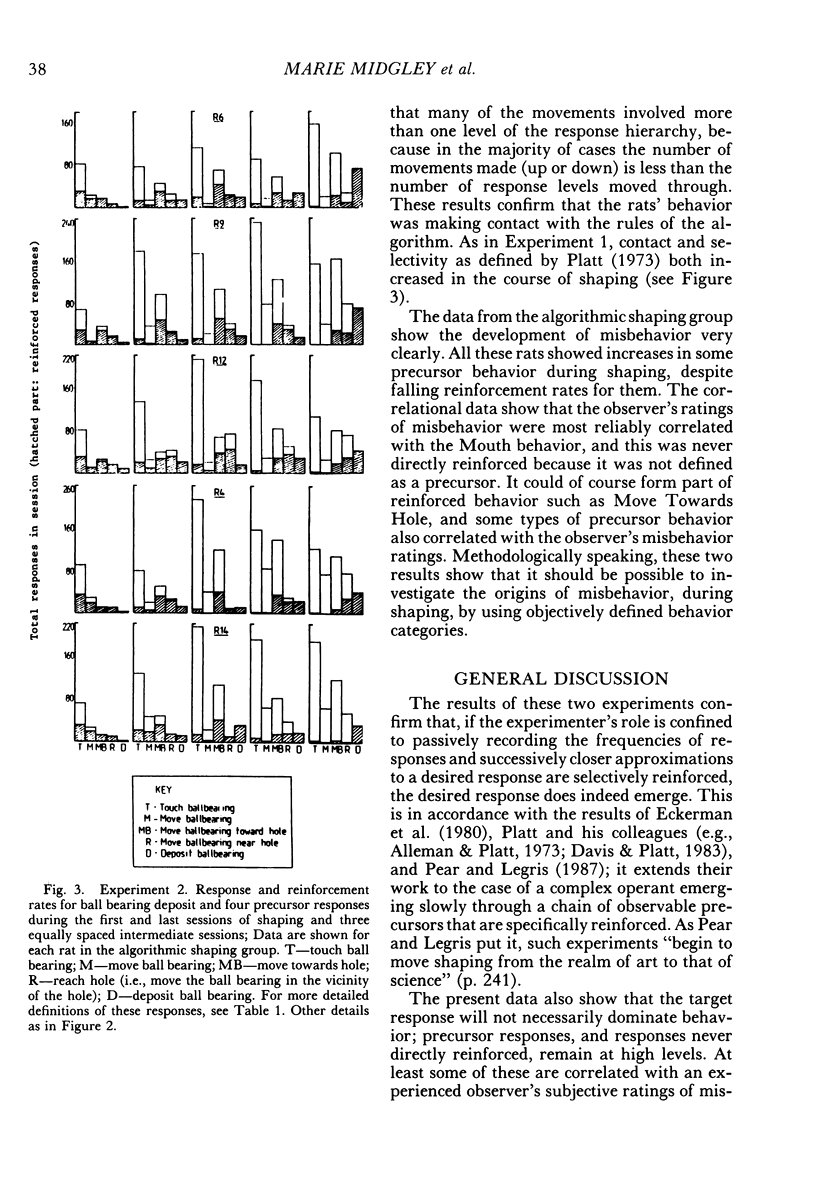
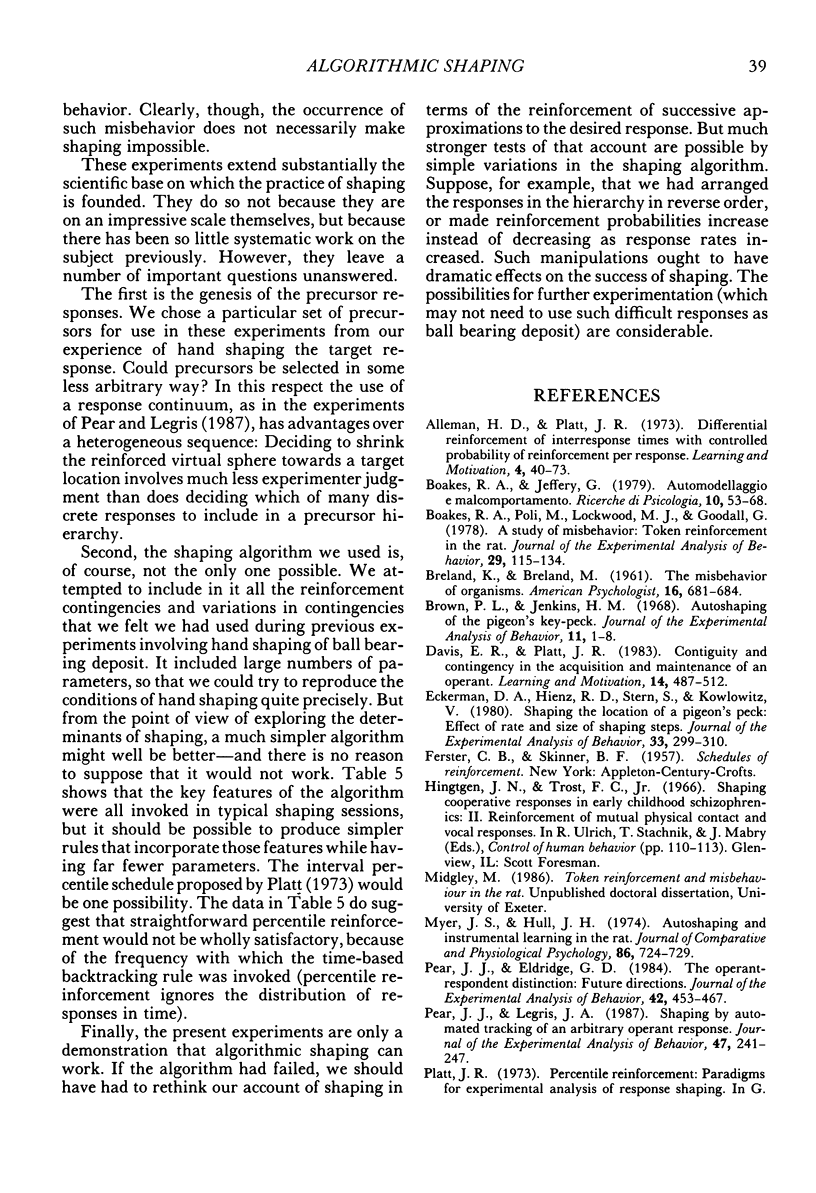
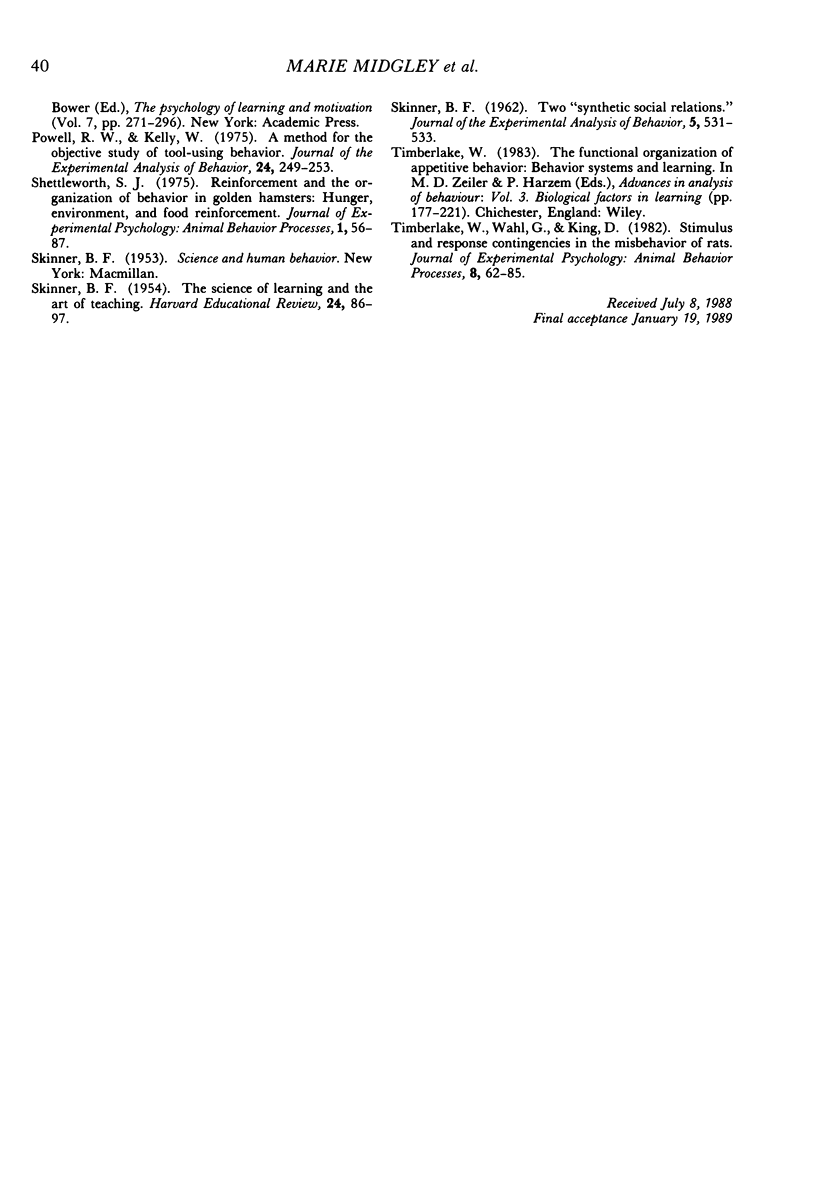
Selected References
These references are in PubMed. This may not be the complete list of references from this article.
- Boakes R. A., Poli M., Lockwood M. J., Goodall G. A study of misbehavior: token reinforcement in the rat. J Exp Anal Behav. 1978 Jan;29(1):115–134. doi: 10.1901/jeab.1978.29-115. [DOI] [PMC free article] [PubMed] [Google Scholar]
- Brown P. L., Jenkins H. M. Auto-shaping of the pigeon's key-peck. J Exp Anal Behav. 1968 Jan;11(1):1–8. doi: 10.1901/jeab.1968.11-1. [DOI] [PMC free article] [PubMed] [Google Scholar]
- Eckerman D. A., Hienz R. D., Stern S., Kowlowitz V. Shaping the location of a pigeon's peck: effect of rate and size of shaping steps. J Exp Anal Behav. 1980 May;33(3):299–310. doi: 10.1901/jeab.1980.33-299. [DOI] [PMC free article] [PubMed] [Google Scholar]
- Pear J. J., Eldridge G. D. The operant-respondent distinction: Future directions. J Exp Anal Behav. 1984 Nov;42(3):453–467. doi: 10.1901/jeab.1984.42-453. [DOI] [PMC free article] [PubMed] [Google Scholar]
- Pear J. J., Legris J. A. Shaping by automated tracking of an arbitrary operant response. J Exp Anal Behav. 1987 Mar;47(2):241–247. doi: 10.1901/jeab.1987.47-241. [DOI] [PMC free article] [PubMed] [Google Scholar]
- Powell R. W., Kelly W. A method for the objective study of tool-using behavior. J Exp Anal Behav. 1975 Sep;24(2):249–253. doi: 10.1901/jeab.1975.24-249. [DOI] [PMC free article] [PubMed] [Google Scholar]
- SKINNER B. Two 'synthetic social relations'. J Exp Anal Behav. 1962 Oct;5:531–533. doi: 10.1901/jeab.1962.5-531. [DOI] [PMC free article] [PubMed] [Google Scholar]
- Timberlake W., Wahl G., King D. Stimulus and response contingencies in the misbehavior of rats. J Exp Psychol Anim Behav Process. 1982 Jan;8(1):62–85. [PubMed] [Google Scholar]


